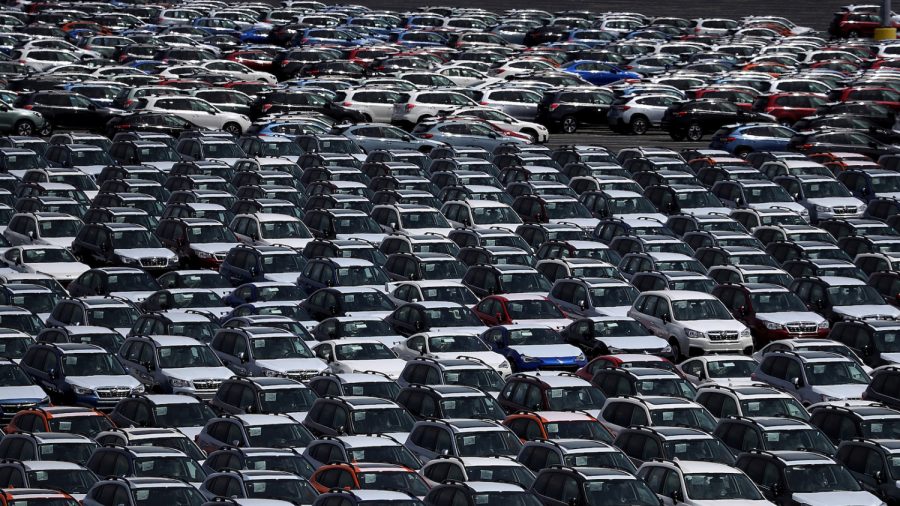WASHINGTON—The ongoing trade war between the world’s two largest economies has started to affect Europe. And if escalating tensions should lead to the United States imposing auto tariffs, the effects on European countries—particularly Germany and Italy—will worsen, according to Goldman Sachs.
The White House announced a six-month delay on May 17 to the decision on whether to impose tariffs on autos and auto parts, bringing a temporary sigh of relief to the euro area. However, the increasingly bitter trade dispute between the United States and China has already affected business sentiment in Europe.
“Euro area financial conditions have tightened notably in response to adverse trade news,” according to a May 21 Goldman Sachs report.
European financial indicators are sensitive to trade uncertainty, with manufacturing gauges among the worst affected, the report stated.
Although the threat of U.S. tariffs on auto imports faded slightly after President Donald Trump delayed his decision, the risk still remains. Goldman Sachs predicts the United States and the EU will ultimately reach a deal to avoid car tariffs, “but we see a 20 percent risk of U.S. auto tariffs with subsequent EU retaliation.”
On May 17, Trump said he directed U.S. Trade Representative Robert Lighthizer “to negotiate agreements to address the national security threat” arising from auto imports. According to the White House, “if agreements are not reached within 180 days, the President will determine whether and what further action needs to be taken.”
‘Worse Than China’
Trump repeatedly accused the EU of taking advantage of the United States on trade.
The EU “treats us, I would say, worse than China,” Trump said at the National Association of Realtors event on May 17.
“They don’t want our cars,” he said. “They send Mercedes-Benzes in here like they’re cookies. They send BMWs here.”
European tariffs on U.S. vehicles entering the European market are 10 percent, while the U.S. tariff on imported vehicles is only 2.5 percent. More than 54 percent of automotive sales in the United States are international nameplate vehicles, according to the National Automobile Dealers Association. Forty-four percent of these foreign cars are assembled in the country.
The direct trade impact of auto tariffs is large for Germany and Italy in line with their share of auto exports to the United States. All European nations, however, will suffer from the effects of adverse sentiment if the Trump administration decides to slap on auto tariffs, according to Goldman Sachs.
“Our simulations suggest that the GDP impact of the tariffs implemented to date remains small at about 0.1 percent for the Euro area,” the Goldman Sachs report stated. “But we estimate that the cost would rise to 0.3 percent of Euro area GDP, if the trade war were to escalate to include auto tariffs.”
In addition, spillovers from the auto industry into other sectors could amplify the losses to production. Hence, the indirect effects on other sectors nearly double the effects in Europe, according to the report.
Odds of US-China Trade Deal
Tensions escalated between the United States and China early in May after Beijing backtracked on delivering key structural reforms, and Trump raised tariffs on Chinese goods.
The U.S. trade delegation spent the past six months negotiating a detailed agreement with China, said Treasury Secretary Steven Mnuchin at the House Financial Services Committee hearing on May 22.
“I thought we were close to an agreement,” he said. “China has taken a big step backwards now.”
The recent tension led to an 11 percent drop in Chinese equities from their year-to-date peaks in April.
Goldman Sachs economists predict that a deal will likely be reached by the end of June or early July after Trump and Chinese leader Xi Jinping convene at the G-20 summit in Osaka, Japan, in late June. However, they assign a 30 percent probability for a no-deal scenario and implementation of across-the-board tariffs.
“I remain hopeful that at some point, we’ll probably get together with China,” Trump said May 23 during his meeting with farmers and ranchers at the White House. “If it happens, great. If it doesn’t happen, that’s fine. That’s absolutely fine.”
From The Epoch Times


